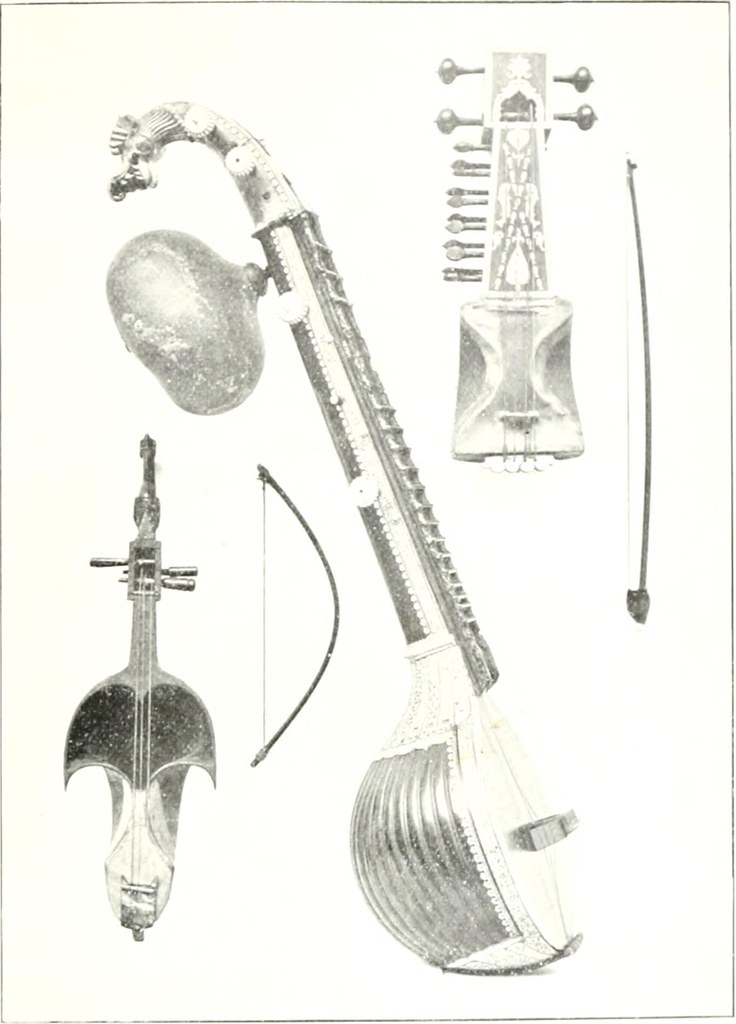The Middle East is renowned the world over for its rich cultural history, and in particular its music, from the mesmerizing lyrics of Abdel Halim Hafez to the tantalizing voice of Um Kalthoum. Thing is, behind the distinctive and often arresting voices of those great singers of the region is the sound of musical instruments unique to the Middle East that open up new modes of expression and feeling. These unique and often unusual instruments have helped give the region its unique sound and have enabled genres in the region to experiment with melodies, rhythms, and tones, otherwise impossible on instruments from elsewhere in the world.
The sad part is that many of these old and unusual instruments seem to be slowly disappearing from popular culture, or have already been mostly forgotten about outright. In today’s music scene, many traditional instruments have been replaced with guitars, keyboards and other instruments. That is why we wanted to revive and shine a light on the region’s most unique and unusual musical instruments that originated from the Middle East and North Africa.
Simsimiyya
Also known as the Egyptian lyre, the simsimiyya can trace its origins all the way back to ancient Egypt. While several pharaonic tomb paintings have featured simsimiyyas and several have been unearthed from the sands and now housed in museums, this native Egyptian instrument was played throughout the Islamic period and is even played today, especially by musicians in Egypt’s Port Said. The instrument is believed to have been introduced to Lower Egypt by Nubians who brought it with them when they were enlisted to help build the Suez Canal in the nineteenth century.
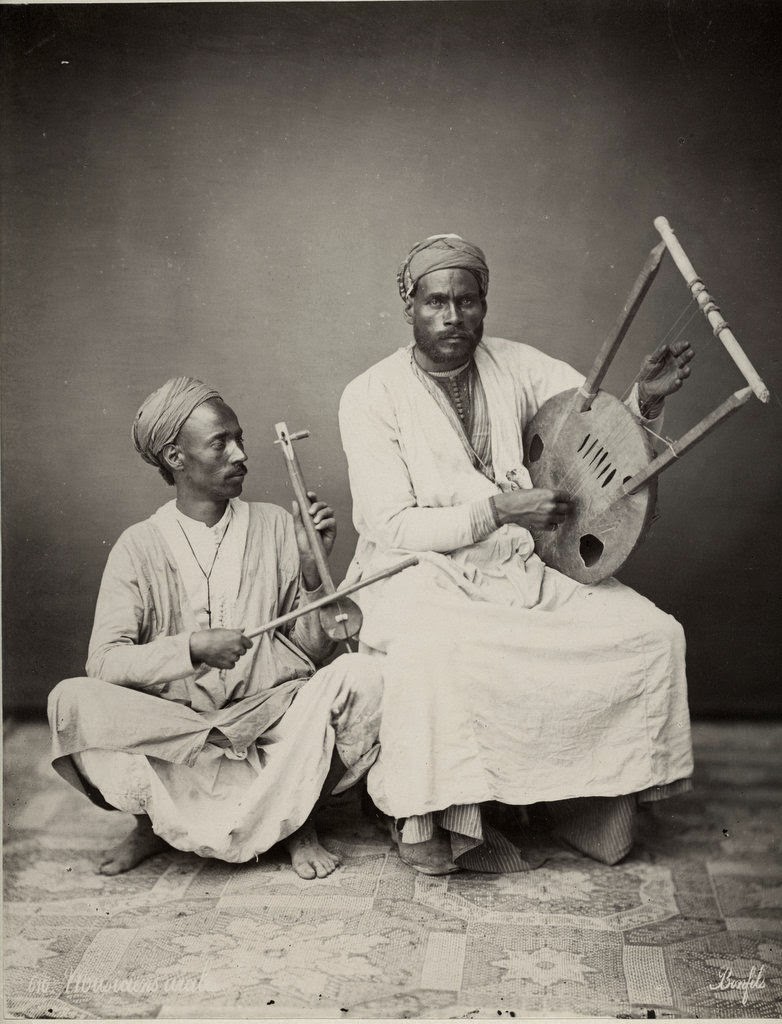
The simsimiyya quickly became a hugely popular instrument used in the folk genre knows as sawahli, which translates as coastal, referring to the coast of Egypt facing the Mediterranean. The simsimiyya is still proudly part of Egypt’s folk culture and is still played in performances in Port Said and Ismalia and surrounding villages, often accompanied by a traditional dance known as bambutiyya.
Manjur
One of the Middle East’s most unique and odd musical instruments is a percussion instrument called a manjur. The manjur is a cloth covered in goat hooves that is tied to someone who then shakes and moves their hips so the hooves knock into each other and create a rattling and clanking sound. This unusual instrument can primarily be found in Oman, UAE, Qatar, and eastern Saudi Arabia and is often used in fann at-tanbura (traditional dance and music genre of the gulf) performances. They are also popular in Zar performances, where the singer and dancers would enter into a trance to ward off evil spirits.

Qanun
The qanun’s legendary difficulty and the strict rules that have to be followed to produce the instruments famed melodramatic sounds gave the instrument its name, qanun, which roughly translates into Arabic as rules. The origins of this special instrument go back to before the time of Christ, and to the ancient civilizations of Anatolia, Mesopotamia and Egypt. It went on to be an incredibly popular instrument across the region, continuing on through the Islamic period, and until today for classically-trained musicians. Mastering the 81 strings of the qanun is no easy feat, but its sound is quite special and something to listen to live if you ever get the chance at a local cultural centre or opera house.
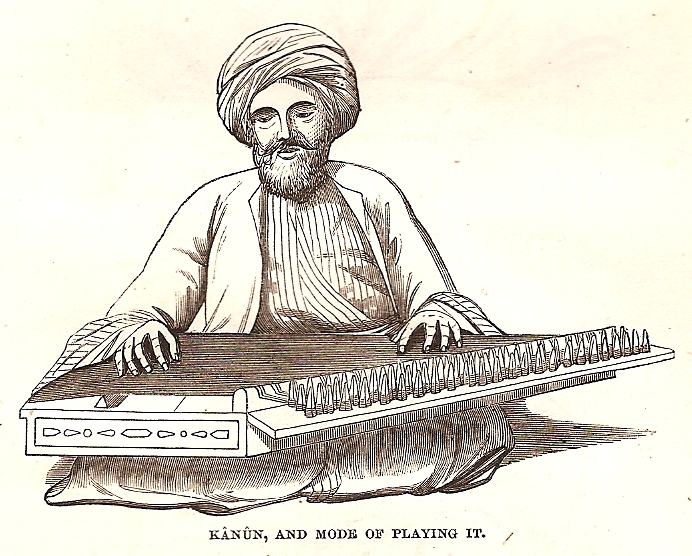
Kamancheh
Spilling over the borders of the Middle East, the kamancheh is a popular and widely played instrument played throughout central Asia and also in Iran, Iraq, and Kurdistan, with very similar instruments also played in Turkey. This unusually shaped instrument with its thick stumpy neck and sheepskin-covered drum takes its name from the Persian word for little bow and as of 2017 has been recognized by UNESCO as part of its Intangible Cultural Heritage List. Often beautifully inlayed with ivory or pearl, a kamancheh is a work of art in and of its and its sustained sound has often been described as being akin to that of a human voice.
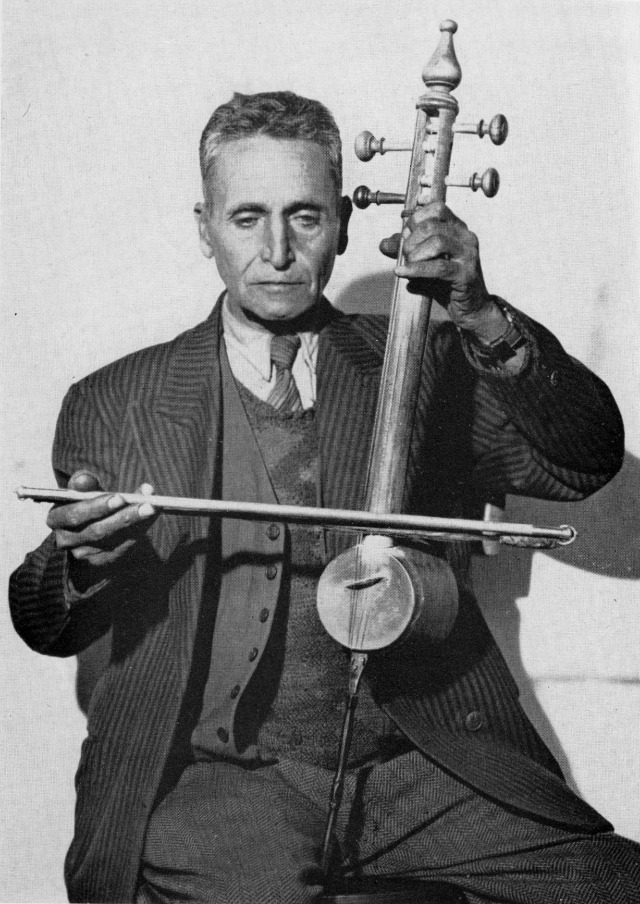
Mihbaj
The mihbaj is a very peculiar instrument that works both as a percussion instrument and a coffee grinder. Although its main function is to grind coffee, through its large and heavy foot-long pestle and large mortar, it also makes for a great a percussion instrument. The mihbaj is one the few instruments used in Bedouin music and has a unique sound quite unlike any other instrument. Members of the Druze community also use this instrument in rituals and produce some incredibly unexpected sounds and rhythms.
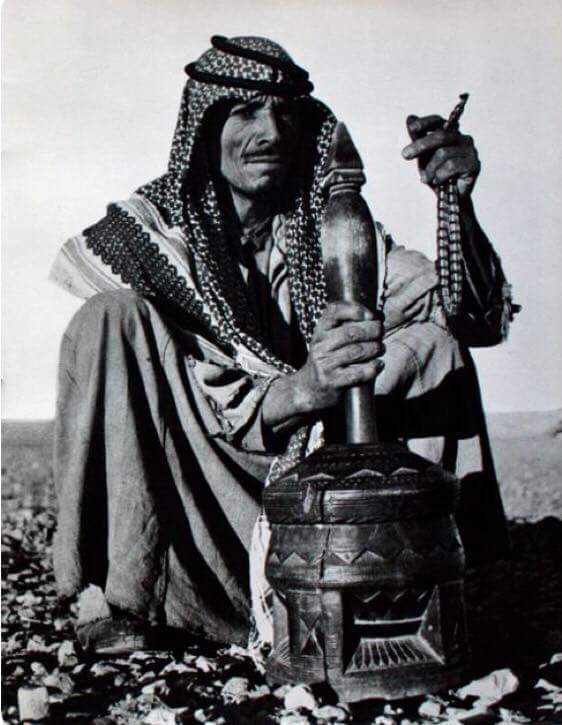
Rebab
The slim and thin rebab, played by either plucking or with a stringed bow, spread throughout Islamic trading routes and established itself as an important folk instrument all the way from parts of Europe to the Middle East and even parts of South East Asia. While its limited range meant that the rebab was quickly pushed aside by the introduction of the violin, some Bedouin musicians still use this ancient instrument throughout the Middle East. Outside of isolated communities and museums, its hard to come across rebabs, but its influence on the development of music worldwide and the development of musical instruments, the violin primarily among them, is hard to underestimate.
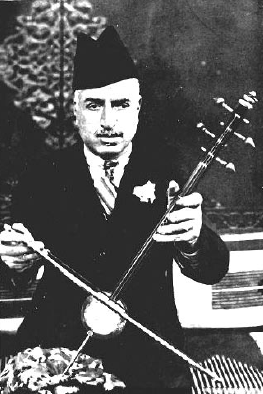
Santur
Is it a drum? Is it a lute? No, its a santur, an incredibly unique stringed instrument that is played with small hammers. With stone carvings from eighth century BC Mesopotamia depicting santur players, the santur is one of the world’s oldest instruments, although at that time it was played hung from the neck as opposed to on the lap. Through trade and travel, the sintur spread throughout the Middle East and it is said that the Chinese yangqin and European hammered dulcimer owe their origins to the santur, along with other similar instruments from every corner of the globe, with the notable exception of South America. The santur, as like many other early instruments, are a reminder of a shared cultural heritage that much of the world has.
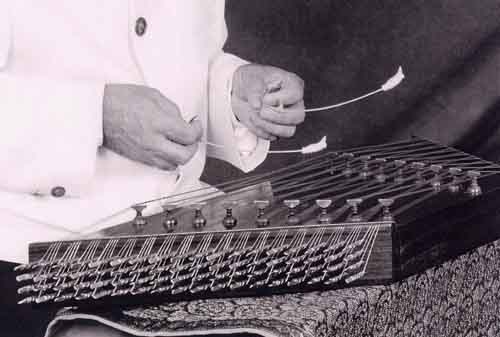
Sintir
In Morocco, an ethnic group known as the Gnawa, use a three-stringed banjo-like instrument with an animal skin-covered drum known as the sintir. The deep and powerful sound of the strings is accompanied by drumming the base and has traditionally been used in the group’s sufi rituals. The sintar is said to create a trance-like rhythm very much unlike other musical genres in the world, giving it an incredibly unique sound and feel. The sintar and the Gnawa’s unique musical sound has gained world-wide attention and there are now several annual music festivals to help preserve and celebrate this unique musical contribution.
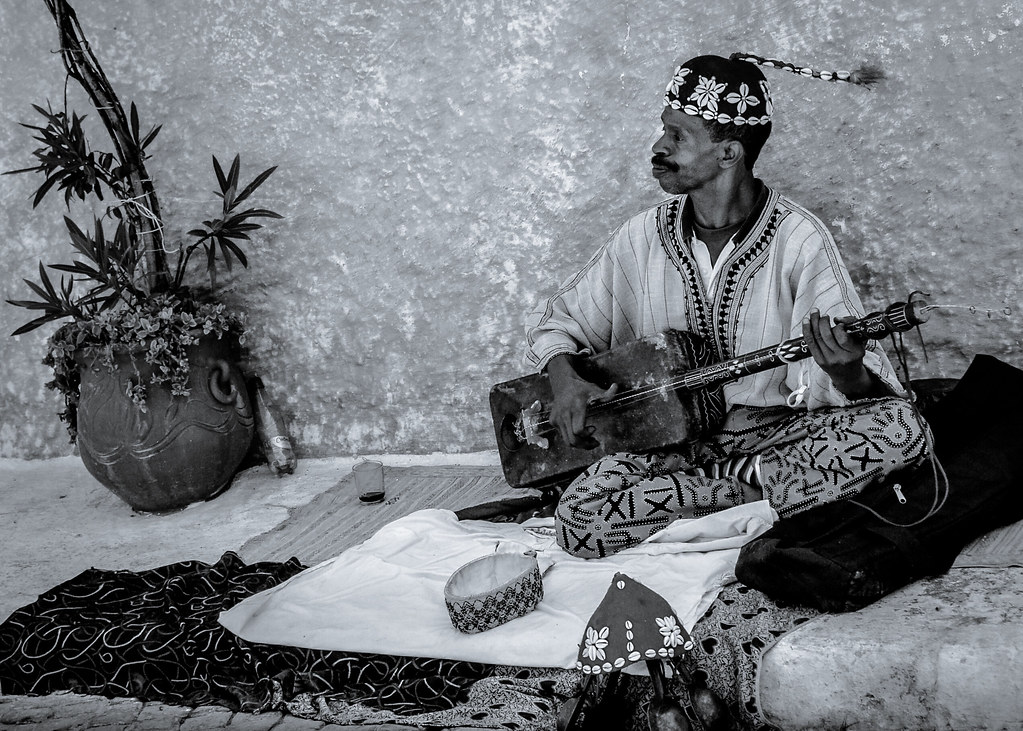
Mizwad
Mizwad is the Tunisian version of the Scottish bagpipes, whose name translates from Tunisian Arabic to the very unglamorous title of sack or food pouch. The windbag made from sheep leather is placed below one arm while the player blows and presses their fingers on and off holes to produce the desired tone. Often accompanied by a drum, the mizwad is mostly a rural and working class instrument played at weddings and dances and is thankfully very much still part of a living and breathing culture.
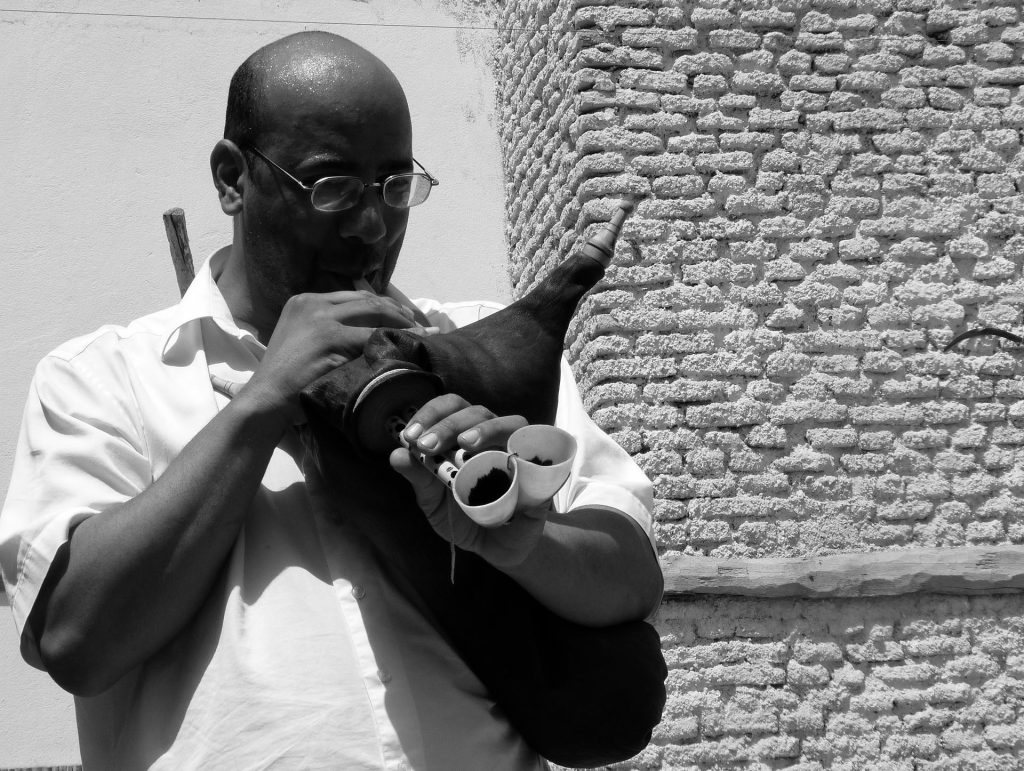
Arghul
If you thought the flute was a bit too simple for you, why not try two flutes at the same time? The arghul is incredibly difficult to play and traces its history back to ancient Egypt, yet is still used in folk music in Palestine, Syria, Jordan, and Egypt. In these countries, the arghul usually accompanies dabke and folkloric belly dancing. With one pipe for the melody with holes and another pipe for sustained drones whose sliding body alters the pitch, the arghul is a one-man band type of instrument.

By learning about each of these instruments, we all get the chance to tap into the region’s rich history and culture as well as how it changed and transformed in the years that followed. Beyond the differences, a lot of us can also appreciate how many of today’s instruments are derived and inspired by these old and traditional tools of music.
WE SAID THIS: The Middle East’s Influence On Modern Western Music: A Perspective


